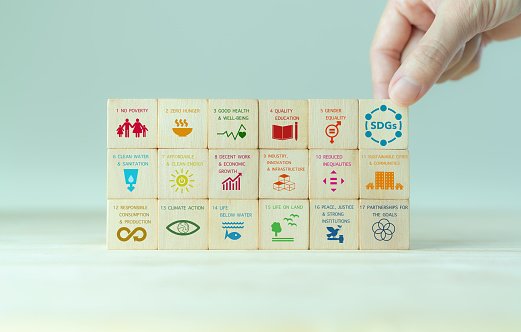WHO appeals for $1.5 billion to deliver healthcare in crises

© WHO/Ala Kheir | A woman receives medical care at a cholera treatment center in Sudan.
The World Health Organisation (WHO) has appealed for more financing to deal with health emergencies that are made worse by conflicts, extreme weather, droughts, and climate change. Every humanitarian crisis is a health catastrophe, according to WHO Director-General Tedros Adhanom Ghebreyesus, who urged governments and donors to increase support. As things are, neither increasing money nor lowering needs are being done. The appeal was supported by Martin Griffiths, UN Humanitarian Affairs and Emergency Relief Coordinator, who emphasized its significance in averting a worsening global health emergency. Prolonged hostilities, like those in Sudan, have put stress on healthcare systems, causing problems for standard care and fueling the spread of illness. Griffiths drew attention to the dangers to world health, citing more than 1,300 documented assaults on healthcare facilities in 19 different nations last year that left patients and medical personnel dead or injured. With over 624 strikes documented in the occupied Palestinian territories during the Hamas-Israel hostilities, the purposeful targeting of healthcare facilities as a strategy of war is concerning. The crucial need for support is shown by the situation in Ukraine, where there have been over 1,400 attacks on health infrastructure since the Russian invasion. The UN has started a $4.2 billion humanitarian appeal for Ukraine to address the country’s persistent hardship and medical issues. In areas devastated by violence, the loss of healthcare infrastructure is thought to be weakening the sense of community.
ADB Forecasts 4.8% Growth for Asia and Pacific in 2023 and 2024

For the next two years, the Asian Development Bank (ADB) predicts faster economic development in Asia and the Pacific, driven by continuing efforts to loosen pandemic restrictions that will encourage more investment, tourism, and consumption. Moving away from its zero-COVID plan is a crucial factor for the People’s Republic of China (PRC). Beyond the 4.2% growth of 2022, the region is expected to grow at a rate of 4.8% in 2023 and 2024. Developing Asia is predicted to increase by 4.6% in 2023 and 5.1% in 2024, excluding the PRC. A steady decrease towards pre-pandemic levels is anticipated although inflation rates differ throughout economies. As a result of increased investment and consumption, regional economies have recovered, mitigating the effects of global issues such as Russia’s invasion of Ukraine. Remittances and tourism are increasing as pandemic restrictions loosen, especially in nations that rely heavily on tourism. However, risks remain, such as the possibility of disruptions resulting from an extended Russian invasion, which might impact commodities prices and cause worldwide inflation. There are threats to financial stability that need to be monitored closely and prevented before they become worse. Notably, the PRC’s economy is anticipated to grow as a result of the relaxation of its zero-COVID policy. Additional highlights include strong growth forecasts for the economies of Southeast Asia and India and moderate growth with slowing inflation in the Pacific area over the forecast period.
Global unemployment to increase in 2024, warns ILO report

© ILO/Marcel Crozet | Jobless workers wait for employment opportunities in Lilongwe, the capital of Malawi.
In addition to the fact that the global economy is growing at its slowest rate in thirty years, the International Labour Organisation (ILO) has released its World Employment and Social Outlook Trends 2024 study, which shows that over 5% of the workforce worldwide is unemployed. As a result of inflation, the ILO notes that living standards have decreased in many wealthy countries. The unemployment rate in 2023 was 8.2% in wealthier countries and 20.5% in poorer countries, indicating differences in the rates of unemployment between these two groups of nations. Gilbert Houngbo, director-general of the ILO, issues a warning: social fairness and a durable recovery are hampered by increased inequality, which is a result of sluggish productivity, prolonged inflation, and falling living standards. By 2024, around 58% of the world’s workforce is predicted to be working informally, despite efforts to combat the informal sector. The research also highlights the uneven recovery following the epidemic, noting that gender disparities in the workforce continue and that residual health concerns affect productivity.
Tobacco use declining despite industry interference: WHO

© Unsplash/Andres Siimon
As of 2022, one in five adults globally smoke, a decrease from one in three in 2000, according to global statistics. The “tobacco epidemic” continues to pose a serious threat to global public health, according to the World Health Organisation (WHO), despite the progress made. It is responsible for over eight million deaths annually, 1.3 million of which are caused by secondhand smoke and affect non-smokers. Not only are cigarettes still the most popular tobacco product, but waterpipe tobacco and cigars are also dangerous. In 150 nations, including Brazil and the Netherlands, tobacco usage rates have decreased as a result of programs like MPOWER. The World Health Organisation highlights these successes. There are still issues, though, as the tobacco industry is alleged to have put money ahead of lives and to be trying to influence public health regulations. WHO notes progress in the fight against tobacco use and industry influence, but emphasizes caution and additional measures to meet reduction targets by 2025.
References
https://www.adb.org/news/adb-forecasts-4-8-growth-asia-and-pacific-2023-and-2024
https://news.un.org/en/story/2024/01/1145377



